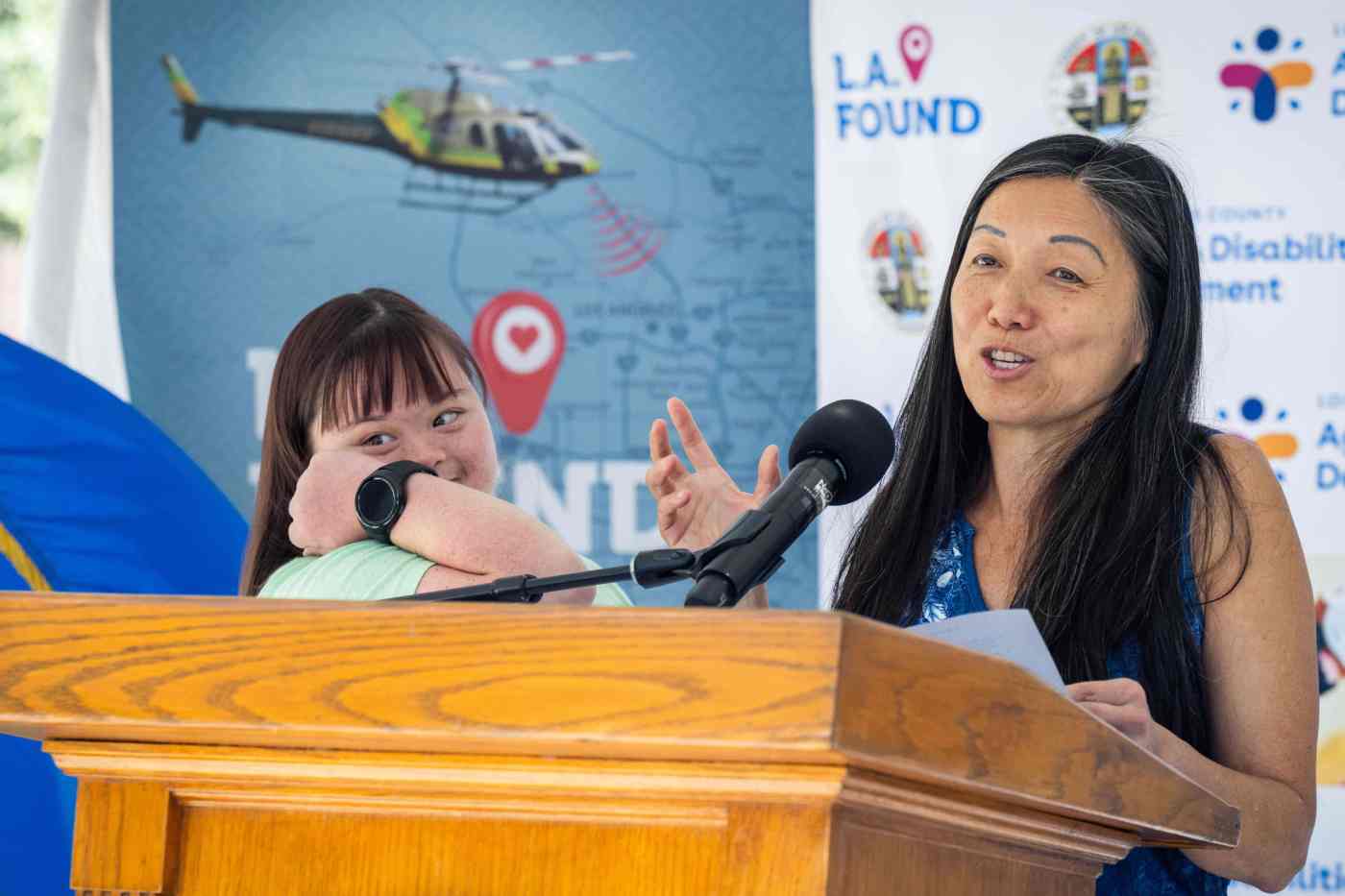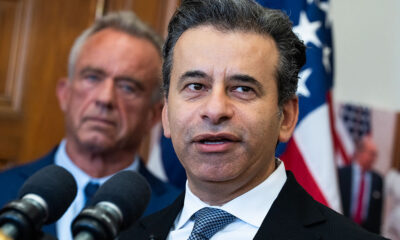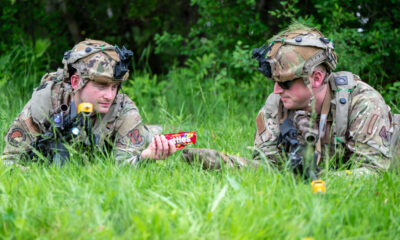Science
California County Implements Smartwatch Tech to Aid Missing Persons

In a significant advancement for public safety, Los Angeles County has announced the rollout of new smartwatch technology aimed at tracking individuals with cognitive impairments such as Alzheimer’s, autism, and other conditions that may lead to wandering. This initiative, called L.A. Found, was highlighted during a press event on October 15, 2025, at Gloria Molina Grand Park.
The program was inspired by the tragic story of Kirk Moody, whose wife, Nancy Paulikas, disappeared in 2016 while visiting the Los Angeles County Museum of Art. Despite extensive searches, she was found deceased two years later. Moody, now a key member of the L.A. Found Taskforce, spoke at the event about the importance of the new technology in preventing similar tragedies.
“It took 26 months to learn we would not find her alive,” Moody recounted, expressing hope that the smartwatch initiative could save lives. The Theora Care Smartwatch offers real-time location tracking, allowing caregivers to receive alerts if the wearer wanders beyond a designated safe zone. The device also features an SOS button for emergencies, enhancing safety for vulnerable individuals.
At the event, various speakers underscored the urgent need for such technology. Janet Hahn, Fourth District Supervisor of Los Angeles County, emphasized that every caregiver deserves peace of mind knowing their loved ones can be located quickly if they go missing.
The L.A. Found program has so far distributed several dozen smartwatches, aiming to reach families of individuals with cognitive impairments. The initiative complements existing programs like Project Lifesaver, which uses radio signals to help first responders locate missing persons. Since its launch in 2018, over 1,800 Project Lifesaver bracelets have been distributed, offering a crucial tool in search and rescue efforts.
“By having this technology that enables us to track them, we have found those with autism who tend to gravitate towards water,” noted LASD Commander Geff Deedrick. He highlighted the efficiency of the new system, which significantly narrows down search areas compared to previous methods.
The need for such measures is stark. In Los Angeles County, over 190,000 older adults live with Alzheimer’s or dementia, and California diagnoses autism in approximately 1 in 22 children. Kate Movius, founder of Autism Interaction Solutions, shared alarming statistics about the mortality rates of missing individuals with autism, particularly emphasizing that around 91% of wandering deaths in this group are due to drowning.
Jordan Nichole Wall, a 27-year-old from Chatsworth with Down syndrome, illustrated the everyday challenges faced by families. Her mother, Mary Brown, explained how her daughter’s impulsive nature leads her to wander off during outings. “Had we had a device like this, we could’ve found her much quicker,” Brown said, showcasing Wall’s new smartwatch as an example of the technology’s potential to provide safety and security.
The event also featured testimonials from families who have benefitted from the smartwatch program. Janet Rivera, who cares for her mother with dementia and her son with cognitive disabilities, expressed gratitude for the peace of mind the devices provide.
“Just knowing that their child or parent running off or getting lost is not the end of the world makes a difference,” Rivera stated. The technology not only aids in locating missing individuals but also allows first responders to act more effectively when needed.
Those interested in the L.A. Found program or wishing to apply for a smartwatch can visit the official Los Angeles County website at ad.lacounty.gov/LAFOUND or call 1-833-569-7651 for more information. This initiative marks a vital step forward in using technology to enhance the safety and well-being of some of the community’s most vulnerable members.
-

 Science1 week ago
Science1 week agoResearchers Challenge 200-Year-Old Physics Principle with Atomic Engines
-

 Politics1 week ago
Politics1 week agoNHP Foundation Secures Land for 158 Affordable Apartments in Denver
-

 Health1 week ago
Health1 week agoNeuroscientist Advocates for Flag Football Until Age 14
-

 Lifestyle1 week ago
Lifestyle1 week agoLongtime Friends Face Heartbreak After Loss and Isolation
-

 Health1 week ago
Health1 week agoFDA Launches Fast-Track Review for Nine Innovative Therapies
-

 Politics1 week ago
Politics1 week agoIsraeli Air Strikes in Lebanon Kill One, Wound Seven Amid Tensions
-

 World1 week ago
World1 week agoTroops to Enjoy Buffalo Chicken, Thai Curry in 2026 MREs
-

 Business1 week ago
Business1 week agoMaine Housing Inventory Surges to Post-Pandemic High
-

 World1 week ago
World1 week agoGlobal Military Spending: Air Forces Ranked by Budget and Capability
-

 Politics1 week ago
Politics1 week agoMassachusetts Lawmakers Resist Audit After Voter Mandate
-

 Business1 week ago
Business1 week agoSpirit Airlines Cuts Workforce with Furloughs for 365 Pilots
-

 Top Stories1 week ago
Top Stories1 week agoUnforgettable Moments: The Best Victoria’s Secret Performances









